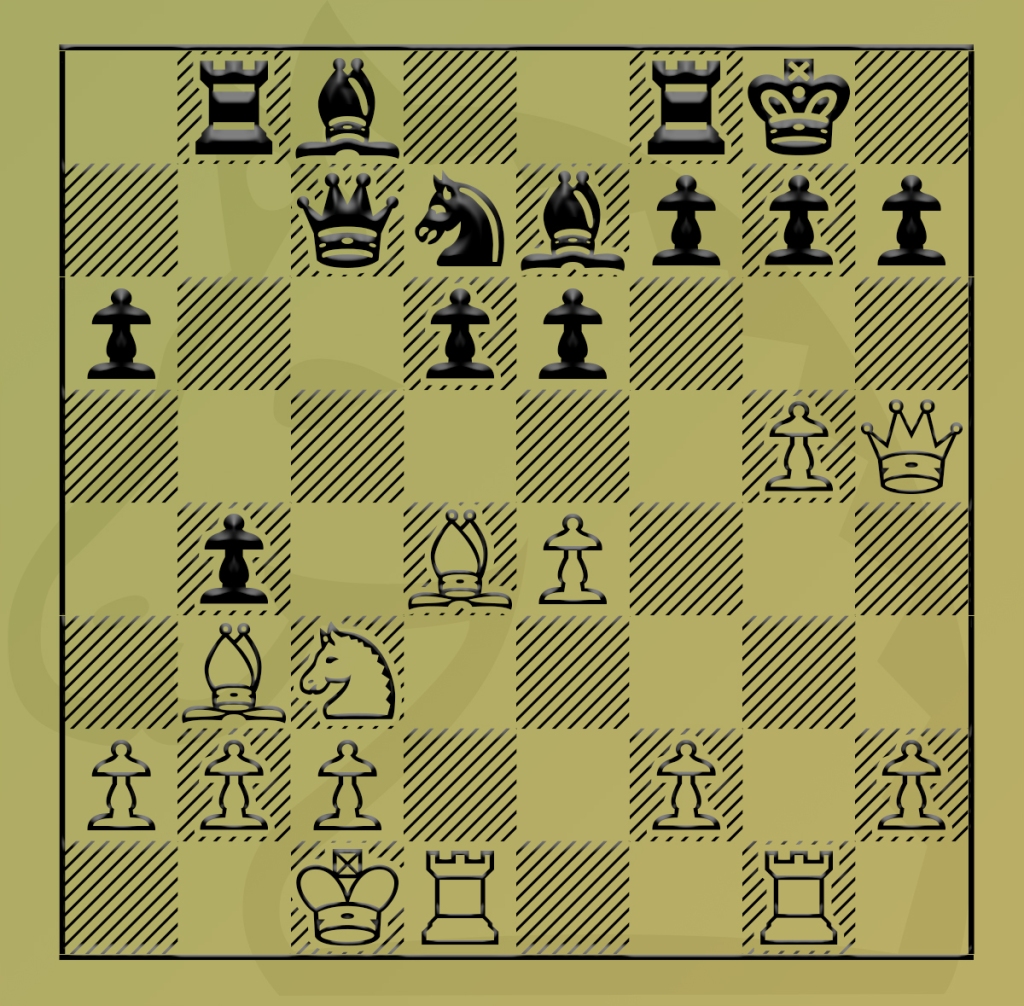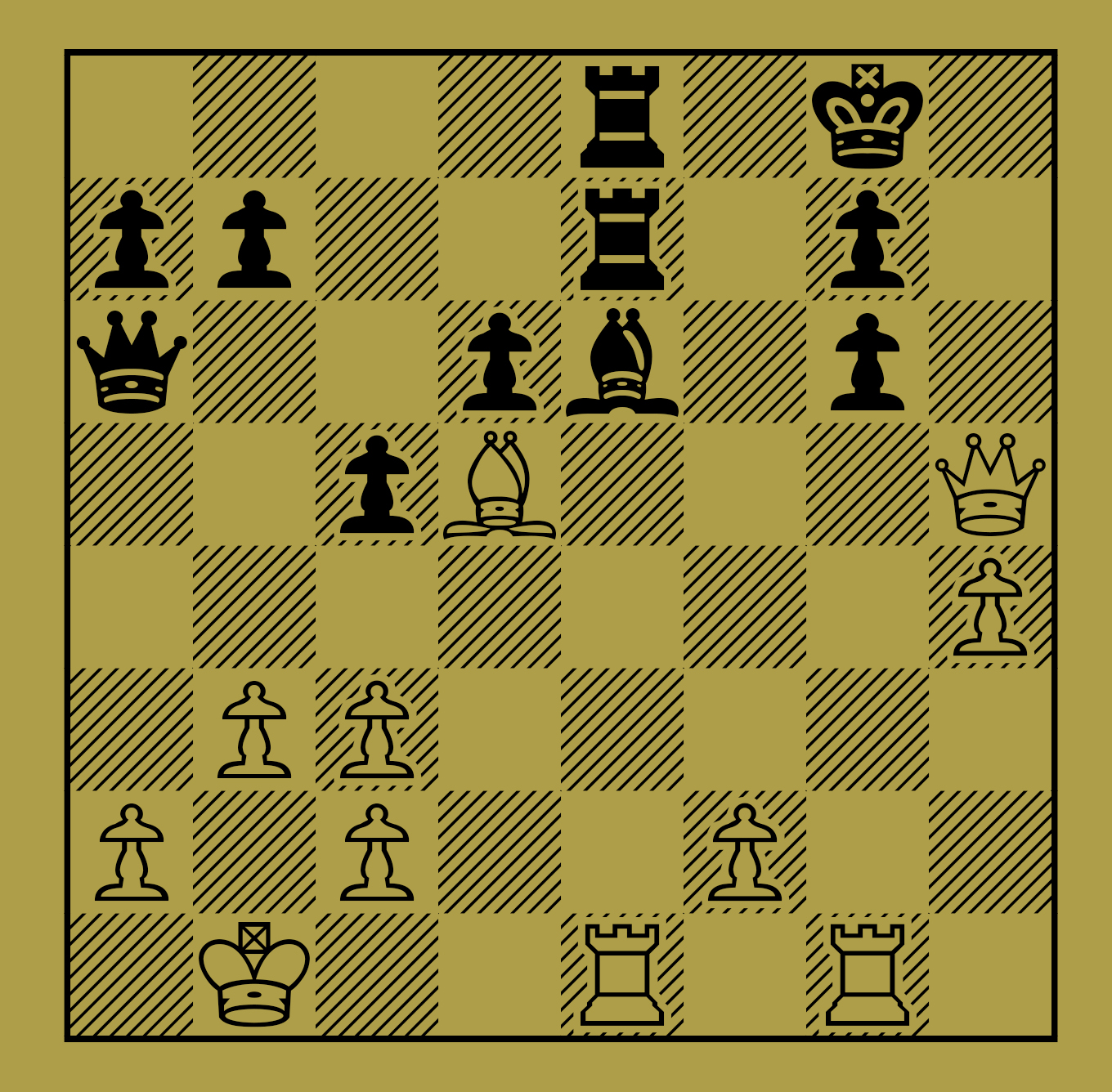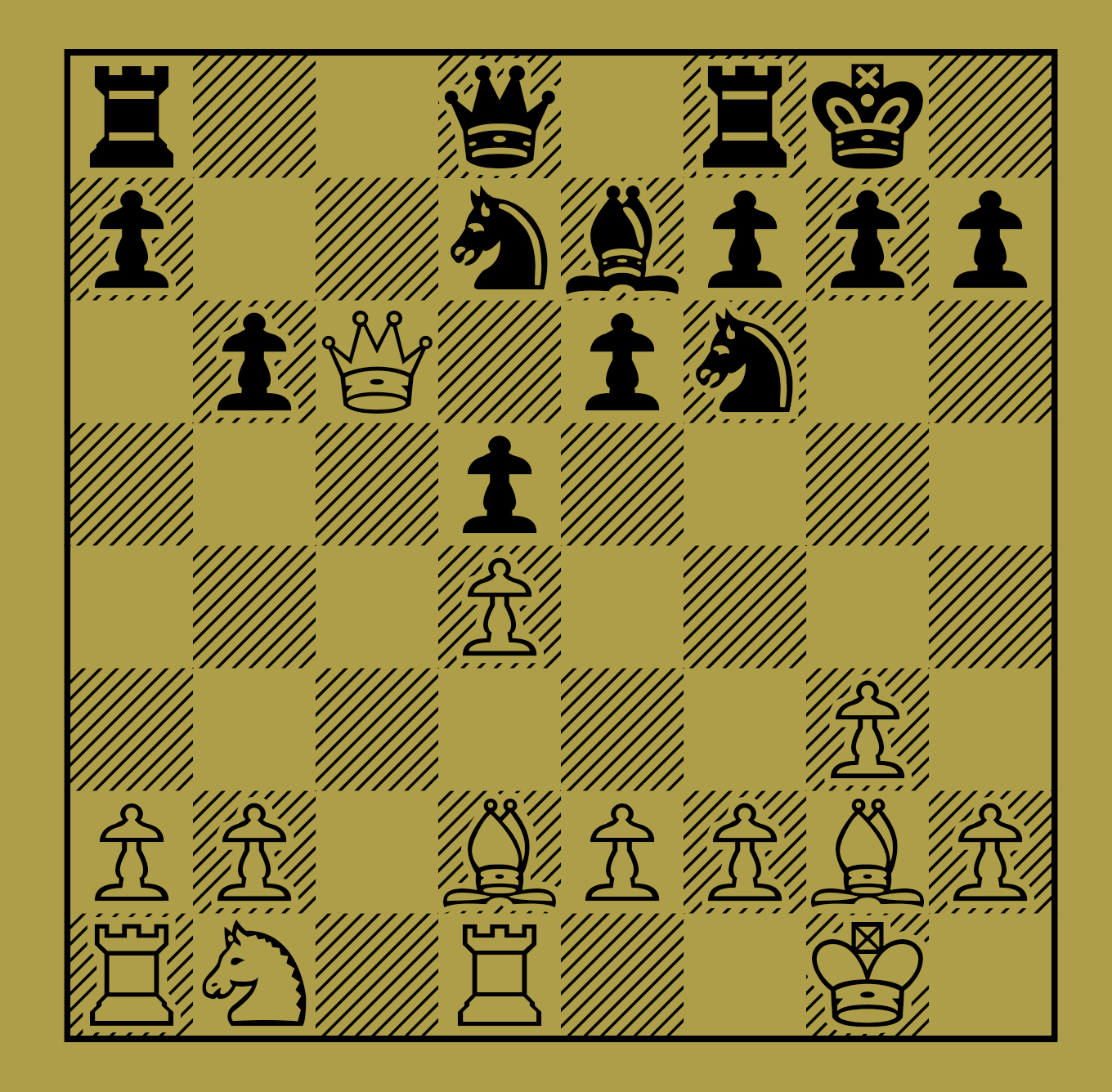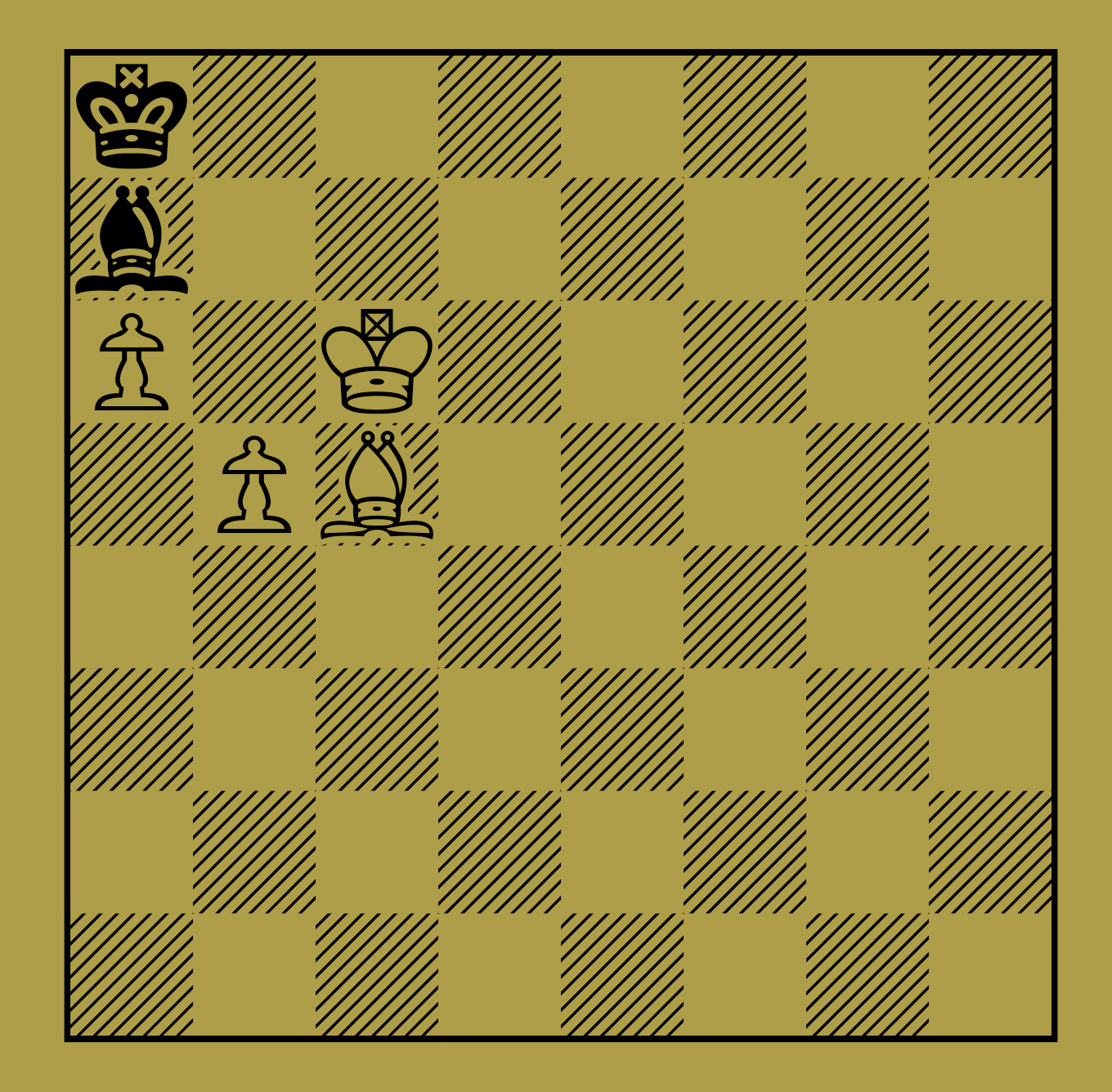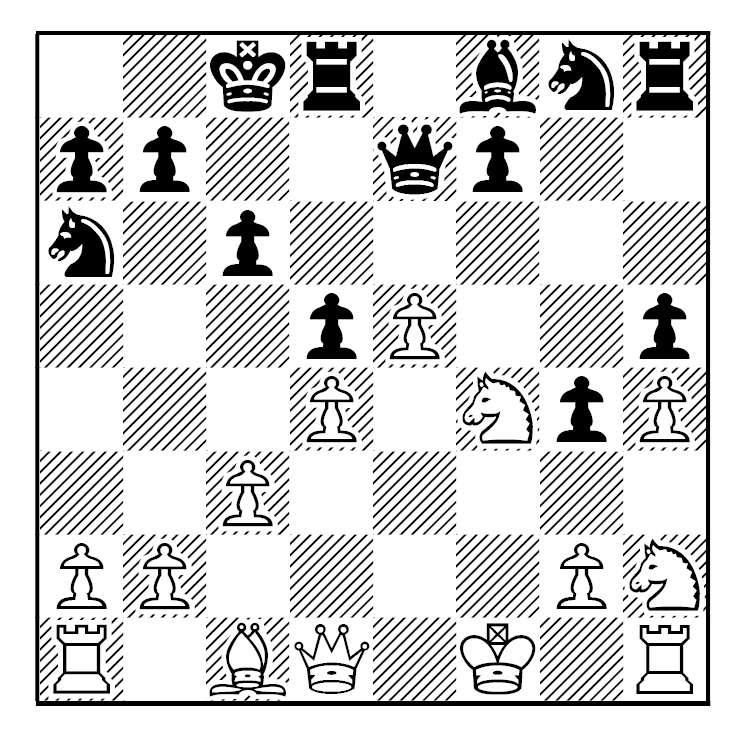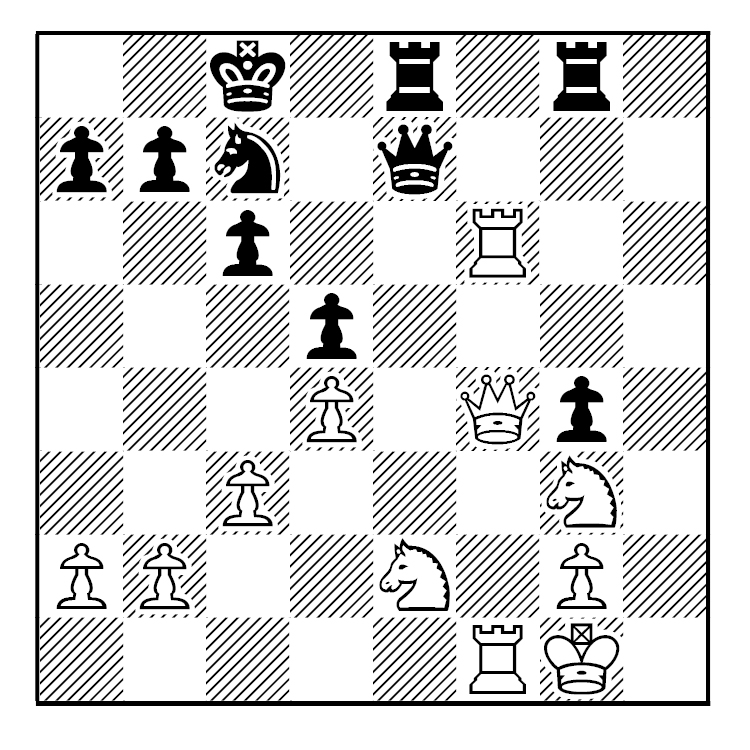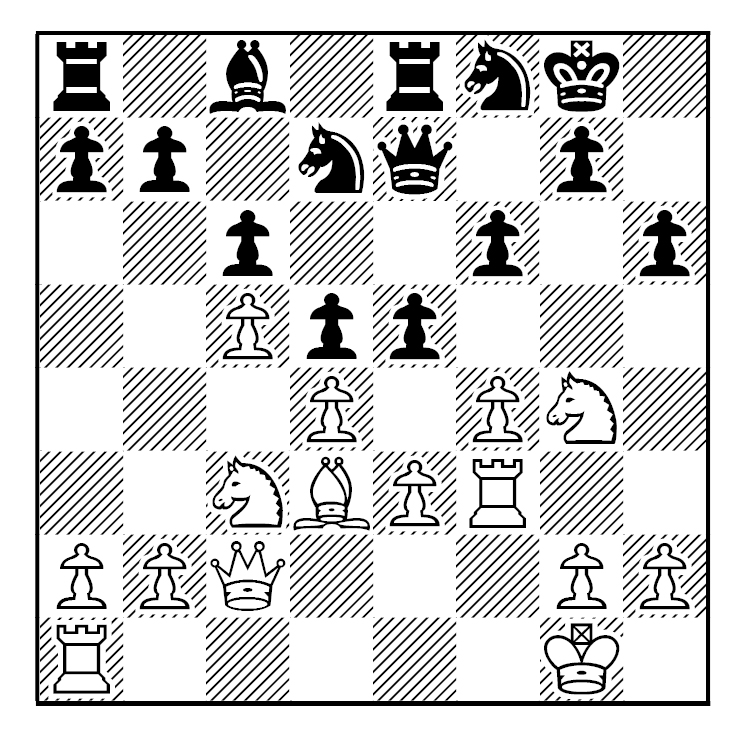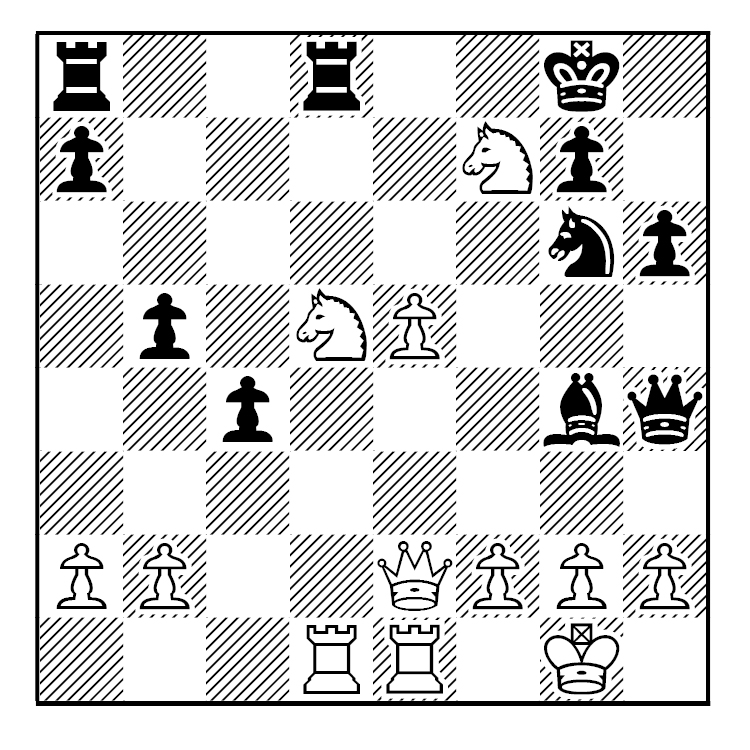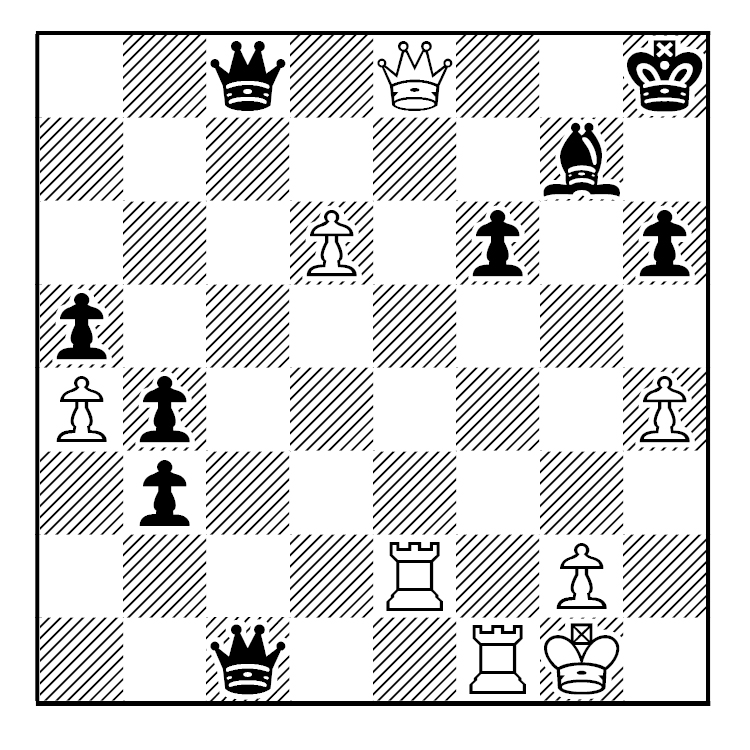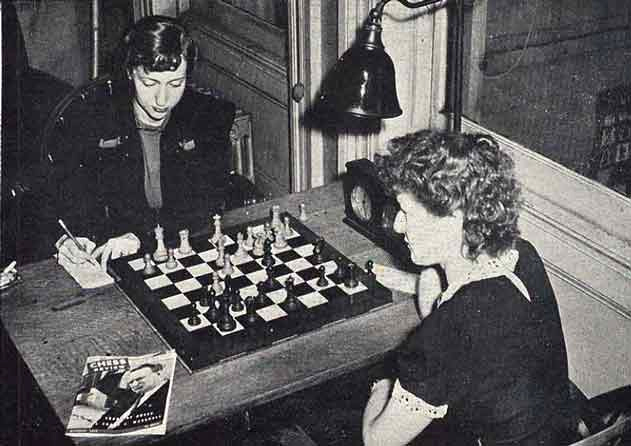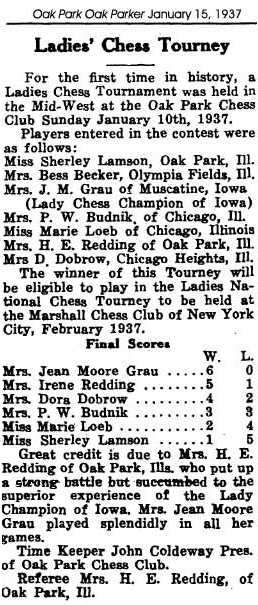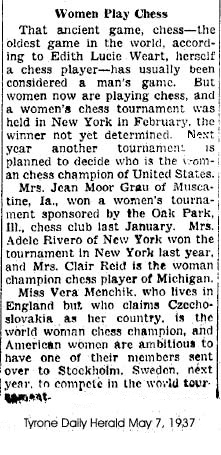… who is celebrating her 60th birthday today (Apr. 8). She is a Serbian player who earned her Woman International Master (WIM) in 1982. And won the Yugoslav Women’s Championship twice (1985 and 1987).
She does well in active piece play and unclear positions. Here are a few games of this still young woman.

Bettina Trabert (2165)-IM Zorica Nikolin (2165)
Women’s Ol.
Dubai, 1986
[B22]
1.e4 c5 2.c3 Nf6 3.e5 Nd5 4.d4 cxd4 5.Bc4 Qc7 6.Qe2 Nb6 7.Bd3 Nc6 8.Nf3 d5 9.O-O (9.exd6!?) 9…Bg4 10.Bf4 e6 11.Rc1?! (White gets out of the pin with 11.cxd4 Nxd4 12.Qe3 Nf5 13.Bxf5 Bxf5.) 11…dxc3 (Black now has the advantage.) 12.Nxc3 a6 13.a3 Be7 14.b4 Qd8 15.Rab1 Nd4 16.Qe3 Nxf3+ 17.gxf3 Bh5 18.Ne2 Bg6 19.Rb3 Bxd3 20.Rxd3 Rc8 21.Rxc8 Nxc8 22.Nd4 Nb6 23.Bg3 Nc4 24.Qe2 Qd7 25.f4 g6 26.f3 O-O 27.Be1 Rc8 28.Qg2 Kh8 29.Rc3 Nb6 30.Qc2 Rc4 31.Rxc4 dxc4 (Black can also play 31…Nxd4, but it’s important to gain a promising potential passed pawn.) 32.Bf2 Qa4 (> 32…Qc7) 33.Qc1 Bd8 34.Ne2 Qd7 35.Bc5?! (> 35.Nd4)
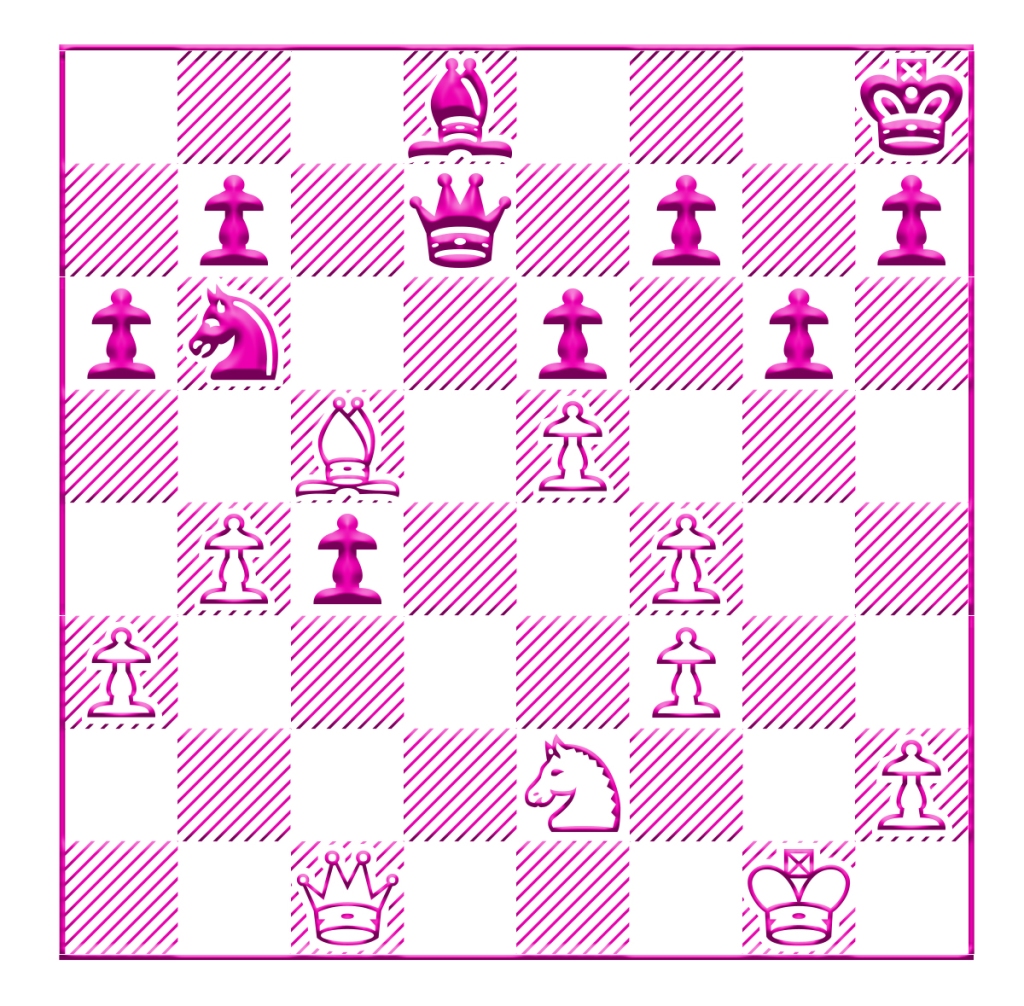
35…Qd3! -+ 36.Nd4 Nd5 37.Qc2 Qxc2 38.Nxc2 b6 39.Be3 b5 40.Kf2 Kg8 41.Nd4 Bb6 (Black simplifies by trading down and win with her advanced c-pawn.) 0-1
WGM Shilan Liu (2325)-WIM Zorica Nikolin (2325)
Women’s Izt.
Tuzla, 1987
1.e4 e5 2.Nf3 Nc6 3.Bb5 a6 4.Ba4 Nf6 5.O-O Nxe4 6.d4 b5 7.Bb3 d5 8.dxe5 Be6 9.c3 Bc5 10.Nbd2 O-O 11.Bc2 Nxf2 (The tactical Dilworth, a good surprise opening. Advantage lies with the person who either studied it more deeply or is more tactically inclined.) 12.Rxf2 f6 13.exf6 Bxf2+ (13…Qf6 is an alternate move.) 14.Kxf2 Qxf6 15.Kg1 g5 16.h3!? (16.Nb3, the most common move, runs into 16…g4! 17.Qd3 Rf7, and Black probably has a slight advantage. Proving it will take more analysis than we have space here. We have to ask, did White know this and willing avoided it?) 16…h5 17.Nf1 g4 18.hxg4 hxg4 19.Ng5 Qf2+ 20.Kh1 Qh4+ 21.Kg1 Qf2+ 22.Kh2 1/2-1/2
Ljupco Radicevski (2159)-WIM Zorica Nikolin (2230)
Skopje Open, Dec. 17 1998
[A03]
1.f4 d5 2.g3 Nf6 [ECO gives 2…Qd6 3.Bg2 e5 4.fxe5 Qxe5 5.Nc3 Nf6 6.Nf3 Qh5 7.O-O Bc5+ 8.d4 Bb4 (unclear), citing Wade-Barcza, Belgrade 1954.] 3.Bg2 c5 4.d3 Nc6 5.Nf3 g6 6.O-O Bg7 7.Qe1 d4 8.Na3 Nd5 9.Bd2 O-O 10.c3 Bf5!? (More common is 10…e5. The text move indicates that Black wants prefers piece development over space.) 11.h3?! h5! (Only now does Black seek space for her pieces in light of White loosening of his kingside.) 12.Nc2 Qd7 13.Kh2 e5 14.c4 Nde7 15.Nh4 Rae8 16.b4 exf4 17.gxf4 b6 18.b5 Nd8 19.Qg3 Be6 20.Bf3 Nf5 21.Nxf5 Bxf5 22.Rg1 f6 23.Ne1 Qc7 24.Ng2 g5 25.Bxh5 Re7 26.Raf1 Ne6 27.Bf3 Bh6 28.Bd5 Kh8 29.Qf3 Rh7 30.Rh1
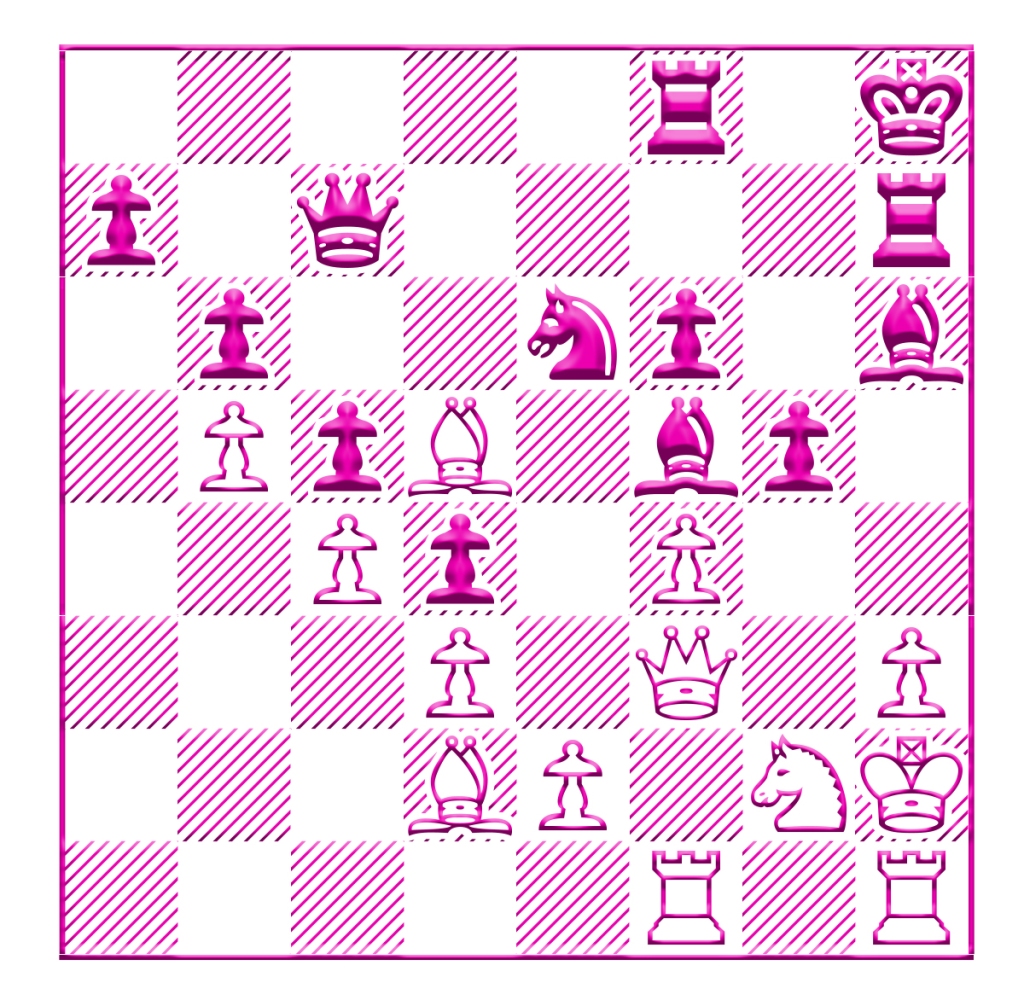
30…g4! 31.Qf2 Rg8 32.hxg4 Bxf4+ 33.Kg1 Bh2+ 34.Rxh2 Qxh2mate 0-1
WIM Zorica Nikolin (2209)-WGM Svetlana Prudnikova (2411)
Yugoslavia Women’s Ch.
Belgrade, Oct. 19 1999
[B89]
1.e4 c5 2.Nf3 Nc6 3.d4 cxd4 4.Nxd4 Nf6 5.Nc3 d6 6.Bc4 e6 7.Be3 Be7 8.Qe2 a6 9.O-O-O O-O 10.Rhg1 Nxd4
[There is nothing wrong with this move of course. But 10…Na5 11.Bd3 b5 is more common. And Black still has to be careful.
Klaic (2390)-Barlow (2510), 15th World Correspondence Ch., continued with 12.g4 b4 13.Na4!? Bd7? 14.Nb6! Qxb6 (14…Rb8 15.Nxd7 Nxd7 16.Bxa6) 15.Nxe6 Qxe3+ 16.Qxe3 fxe6 17.g5 Nh5 18.e5 d5 19.g6 1-0.]
11.Bxd4 b5 12.Bb3 b4 13.Na4 Bd7 14.e5 Bb5 15.Qe1 (15.Qe3!?) 15…Nd7 16.exd6 Bxd6 17.Nc5 Nxc5 18.Bxc5 Qg5+ 19.Be3 Qe7 20.Kb1 a5 21.c4 bxc3 22.Qxc3 Rfc8 23.Qd4 Bc5 24.Qe4 Bxe3 25.fxe3? (25.Bc2!) 25…a4 26.Bc2 g6 27.a3 Bc6 28.Qd3 Rab8 29.Ka1 Be8? [29…Bxg2! 30.Rxg2? (30.Bc1!) Qb7!] 30.Rd2 Bb5 31.Qe4 Bc6 32.Qd3 Qb7 33.Bb1 Bd5 34.e4 Bb3 35.Qe3 Rd8 36.h4 Rxd2 37.Qxd2 Qe7 38.g3 e5 39.Rc1 Rd8 40.Qe3 h5 41.Qb6 Qd6 42.Qxd6 Rxd6 43.Ba2? (43.Bc2!) 43…Rd3 44.Bxb3 axb3 45.a4 f5 46.Kb1 fxe4 47.a5 Rd6 48.Re1 Kf7 49.Kc1 Rc6+ 50.Kd1 Ra6 51.Rxe4 Rxa5 52.Rb4 Ke6 53.Rxb3 Kf5 54.Rb6 Ra1+ 55.Ke2 Rg1 56.Kf2 Rc1 57.Ke3 Rc2 58.Kf3 Rc1 59.Ke3 Rf1 60.Ke2 Rb1 61.Ke3 Rc1 1/2-1/2


